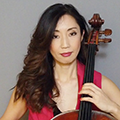Milan, which developed through its commercial activities, is located in northern Italy. In a county that’s known for its coasts and sunshine, it’s a landlocked city with no ocean at all—and one that’s frequently cloudy at that. If you ask the southern Italians, they’ll tell you that the weather is gray here all the time.
But despite its gloomy reputation, Milan is a lively city with a host of spectacular international events, among them Fashion Week, Design Week, and expos.
Reading this, you might get the impression that Milan is something like New York City, with its rows of towering skyscrapers and businesspeople bustling everywhere on the streets—but it’s only relatively recently that high-rises started going up in Milan. If you really look around, it’s more likely that you’ll see a gangly tall building dotted here and there in isolation, along with five- or six-story stone buildings more than 200 years old.
The “true Milanese” are a bit like the people we Japanese would call “dyed-in-the-wool Tokyoites,” since, like Tokyo, Milan was once a blue-collar town that skyrocketed into economic success. As a result, many of the people who grew up in the downtown area saw their hardscrabble neighborhoods transform into high-rent districts and luxury residential areas in the blink of an eye. Many probably feel that they have been elevated to a kind of aristocratic status overnight.
So although the southern Italians generally think of the Milanese as unpleasant, that also gives them cause to poke fun at them—many getting a kick out of mimicking a Milanese accent or Milanese ways of thinking.
Meanwhile, the Milanese like to point out that Milan is the home of world-renowned fashion designer Armani, or the Teatro alla Scala opera house.
Since we’re on the subject, it’s interesting to note that one of the best-known traditional Milanese dishes is a cutlet—but not the fried pork cutlet that comes to most people’s minds. This one is fried veal, and those who know the value of fine food smile greedily as they enjoy this snippet of true Milan.

The restaurants that sell Milan’s famous veal cutlets serve it in portions so enormous, they’re nicknamed “elephant ears.” They’ve gotten so big in recent years that the moderate-eating Milanese can’t even finish the dish in one sitting. And they’re not just big—they’re full of fat and calories, too. Cheese is added to the breadcrumbs of course, and they’re made with tons of butter or olive oil.
Not sure if you want to put down a giant, calorie-packed cutlet? Milan has one more famous dish for you to try—ossobuco. Osso means “bone” and buco is “hole.” The dish is made from cross-cut, bone-in veal shanks. The cross-cutting makes it look like there’s a hole in the bone, which is actually filled with marrow. The marrow turns soft and thick once the shanks are stewed, and scooping it out and relishing it hungrily is the mark of a true Milanese.

They’re both tremendously filling dishes, and these days most Milanese families don’t eat them that often.
So, which would you rather try? Elephant ears or ossobuco?






























































